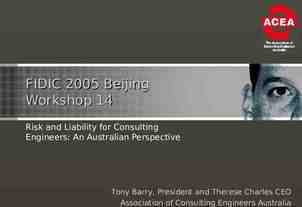Autopsy Errors with Electronic Control Devices: A Cardiovascular
25 Slides7.64 MB
Autopsy Errors with Electronic Control Devices: A Cardiovascular Perspective Mark W Kroll, PhD, FACC, FHRS Faculty of UCLA Creativity and Innovation Program Adjunct Full Professor, Biomedical Engineering, Cal Poly Univ. Adjunct Full Professor Biomedical Engineering, U of Minnesota Taser Intl Scientific and Medical Advisory Board.
Co-Authors Jeffrey D. Ho, MD, Dept. of Emergency Medicine, Hennepin County Medical Center, Mpls, MN. Dorin Panescu, PhD, Sunnyvale, CA. Igor R. Efimov, PhD, Washington Univ, St. Louis, MO. Richard M. Luceri, MD, Holy Cross Hospital, Ft. Lauderdale, FL. Patrick J. Tchou, MD, Cleveland Clinic, Cleveland, OH. Hugh Calkins, MD, Johns Hopkins Hospital, Baltimore, MD AAFS 2007
Electronic Control Devices are Replacing the Club 600,000 Training Uses Cumulative 500,000 Suspect Uses Cumulative 400,000 Total Uses 300,000 200,000 100,000 1/1/00 5/15/01 9/27/02 2/9/04 6/23/05 11/5/06 AAFS 2007
In Custody Deaths Correlate with Handcuffs AAFS 2007
X26 Waveform Typical peak current: 3.3 amperes Typical peak loaded voltage: 1200 V Pulse average voltage: 400 V Main phase duration: 100 µs Delivered charge: 100 µC – At 70 µs it delivers about 80 µC Average current 19 PPS *100 µC 1.9 mA (2.1 mA with negative spike) 4 3 Current (amperes) 2 1 0 0 10 20 30 40 50 60 70 -1 -2 -3 -4 AAFS 2007 Time (microseconds) 80 90
TASER ECDs Off the Chart (Well Below Safe VF Limits) AAFS 2007
So, How Can It Capture Skeletal Muscles but Not Affect the Heart? Anatomy – Skeletal muscles are on the outside of the body. – Heart is on the inside of the body. – Electrical current tends to favor the grain of the muscle by 10:1 vs. going against the grain. So current tends to stay on the outside. Optimal stimulation pulse widths are different: – A- motor neuron chronaxie: 50–150 µs – Heart for transcutaneous stimulation: 4 ms 4000 µs AAFS 2007
Cleveland Clinic Study America’s top heart hospital 6 years in a row by U.S. News & World Report. Cocaine increased safety margin by 50-100% On back Lakkireddy DR, Wallick D, Ryschon K, Chung MK, Butany J, Martin D, Saliba W, Kowalewski W, Natale A, Tchou PJ. Effects of Cocaine Intoxication on the Threshold for Stun Gun Induction of Ventricular Fibrillation. J Am Coll Cardiol 2006;48:805–11. Across chest Neck to belly button Down sternum Directly across heart 0% 50% 100% 150% 200% AAFS 2007 Relative Safety Margin After Cocaine 250%
Breathing Unimpaired Acad Emerg Med. 2007 Feb 5 AAFS 2007
Medical Electrocution Occurs 500 Times Per Day 1. 2. 3. 4. 5. 6. VF is either induced or not induced within 1-4 seconds. Asystole or PEA are never induced. The cardiac pulse disappears immediately. The patient loses consciousness within 5-15 seconds. A defibrillation shock—either internal or external—restores a sinus rhythm 99.9% of the time. There is no increased risk of a later VF since electrical current does not linger in the body as a poison or drug might. AAFS 2007
2005 Was A Bad Year for Science ECD Blamed as Primary 4 3 2 1 0 2001 2002 2003 2004 Year of Death 2005 2006 AAFS 2007
The Index Case for 2005 Ronald Hasse age 54 Naked, on 26th floor Talking to aliens on his cell phone CPD and EMS show up TASER ECD is used to take him into custody Dies AAFS 2007
Hasse Headlines Chicago Sun-Times, Jul 29, 2005 Taser Killed Man, Pathologist Finds. In the first ruling of its kind in the nation, the Cook County medical examiner's office has determined the Feb. 10 death of Ronald Hasse was caused by a Taser stun gun Hasse received a five-second electrical burst from the Taser, followed by a 57-second charge, according to Dr. Scott Denton, a deputy medical examiner. AAFS 2007
Sun Times story ctd. The primary cause of Hasse's death was electrocution from the use of the Taser, Denton said. A contributing cause was methamphetamine intoxication, he said. .55 µg/ml of methamphetamine -- 10% over lethal level But the illegal drug probably would not have killed Hasse without his getting "pushed over the edge" by the Taser's jolts, Denton said. DME stressed that what was different was the long 57 second application which is what killed Hasse. AAFS 2007
ECD Download Shows that the Longer Application was the First — Not the Latter! AAFS 2007
What Really Happened? Hasse tried to kick and bite officers and threatened to infect police with HIV. A 57 second TASER hit dropped Hasse. Immediately after he resisted again. This time they need a 5 second therapy until they are able to get handcuffs on. Hasse then climbed into the stair-chair. Paramedics verify normal pulse and respiration. Hasse wheeled to elevator. Alert with eyes open going into elevator. AAFS 2007
Chicago Paramedic Report
Taken down 26 floors. Collapses on ground floor 8 minutes after ECD application. Defibrillation unsuccessful. Death clearly not caused by ECD: – – – – Continued to struggle after first application. Normal pulse after both applications. Normal respiration after both applications. Collapse 8 minutes not 8 seconds after ECD usage. – Failure of immediate defibrillation. AAFS 2007
Autopsy Mentions of TASER ECDs Autopsy Reports Mentioning TASER ECD Number of Reports 25 20 y 4.0286x 8062.4 R2 0.7342 15 10 5 0 2001 2002 2003 2004 Year 2005 2006 AAFS 2007
Scored Errors Failure to appreciate that with electrocution: 1. pulse disappears immediately, 2. there is loss of physical strength for continued resistance 3. collapse occurs within 5-15 seconds 4. VF rhythm is shown on a cardiac monitor 5. immediate defibrillation is usually successful AAFS 2007
Other Scored Errors 6. 7. 8. 9. 10. 11. 12. Blaming the ECD for cardiac physical changes Inclusion of a publicity sensitive safe comment (e.g. “we were unable to eliminate the role” of the ECD) Assuming prolonged ECD applications are more dangerous than other restraint techniques Claiming that ECDs impair breathing Presumption of a lethal synergy between stimulant drugs and the ECD Use of the ECD in the “drive stun” mode only since this involves current passing between 2 very close electrodes Unscientific emotional explanations such as “last straw” or “pushed over the edge.” AAFS 2007
The Scorecard Probable Error in Citing the ECD Time to collapse 1 minute Continued resistance after ECD application Rhythm other than VF Publicity sensitive comments Assumed drug-ECD electrocution synergy Discharge duration or parity Failure of immediate defibrillation Drive stun mode “Last straw” or “over the edge” Cardiac damage ascribed to ECD Assumed ventilation impairment N 21 16 12 9 8 7 7 6 6 4 3 AAFS 2007
Error Rate of 3.1 1.2 per Autopsy Data as of Abstract Submission 6 Errors Per Autopsy 5 4 3 2 1 0 Sep-01 Apr-02 Nov-02 May-03 Dec-03 Jun-04 Year of Death Jan-05 Jul-05 AAFS 2007
TASER-related Errors Dropping Fast! Error Rate by Year of Death 7 Errors Per Autopsy 6 5 4 3 2 1 0 2002 2003 2004 2005 Year of Death 2006 2007 AAFS 2007
Error Analysis Conclusions 90% of autopsies have no errors re the role of electronic control devices. Cardiogenic etiology errors are dropping rapidly. It is impressive that medical examiners have rapidly familiarized themselves with: – – – – time and causation elements of electrocution, ventricular fibrillation, ECD technology, and excited delirium AAFS 2007






























